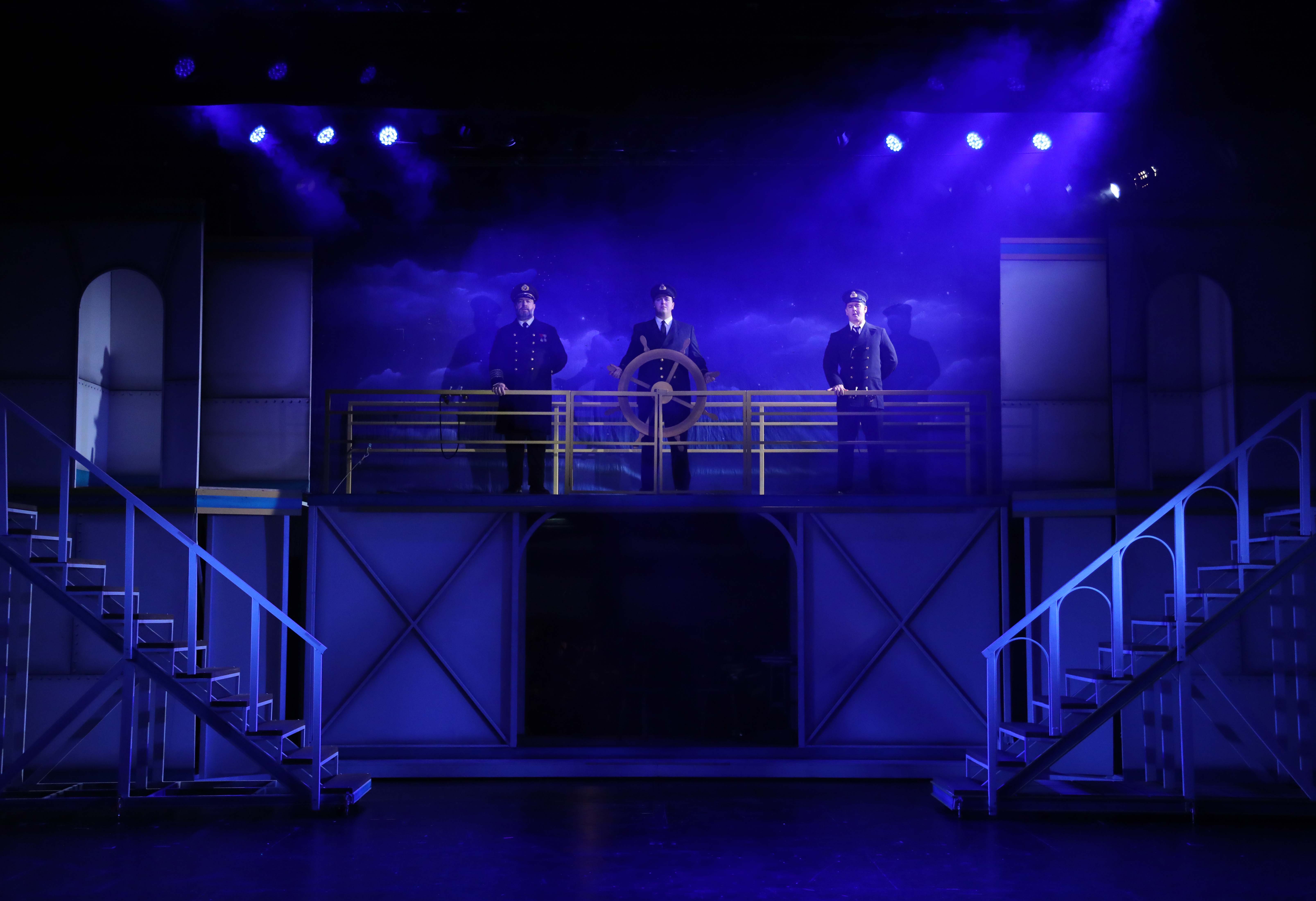
Dolly (Elizabeth DeMent) - her face fixed in an anxious frown - talks about her passion for work. Fragments of Chekhov’s Three Sisters show up in their speech, interpolated there by Parson.

That sense of an unending West Coast sunset is embedded in de Cointet’s sort-of story, in which five (maybe? They evince some doubt) sisters reunite a year after their parents’ deaths. Barely an hour long, the show takes an entire California afternoon. What is happening? Without noticing, your internal clock hops forward fifteen minutes, then seems to crawl backwards. Lauren Machen’s luxe, carpeted set is calming beige on beige, but the actual effect is like staring into the white-out of sun-dazzle. Watching The Mood Room is like being heat-dazed. De Cointet spent time in Los Angeles, and a Pacific ennui pervades both the script and the experience. She writes about Cointet’s texts as things “that bask in the hot mess of the non-narrative posing as narrative.” (Things happen relationships exist there is never anything so conventional as a plot.) Parson’s key verb there is bask. In her note for the production at BAM, Parson explains that Cointet’s 1982 playlet Five Sisters underlies her The Mood Room, a desultory atmospheric that has as much talking as dancing and as much dancing as rolling around on a carpet looking lazy. Once we recognize them as her choreographic alphabet, she starts to stir them with increasing speed into her show. She takes simple movements (a slowed-down frug, a naïve step-touch, a gesture that says “here’s my wrist”) and cools and isolates them.

De Cointet, in a fake review of himself, said that his works “make alphabet soup of our cherished linguistic packaging.” This is a good explanation of what Parson does too. Parson’s cool-headed work as a movement-maker is more recognizable than ever before, its vocabulary globally familiar from David Byrne’s American Utopia. So Guy’s work is usually found in museums? Doesn’t bother her a bit. She’s published a book in which she turned choreography into a mix-and-match card game her Big Dance Theater is both a dance company and a theater company.

Parson, though, doesn’t pay much attention to category. The last time I can find someone presenting one was a reconstruction at the Museum of Modern Art in 2012, in an exhibition about language and fine art.
#CANDLELIGHT THEATER SERIES#
An artist with roots both in Conceptual and Pop Art, de Cointet - who died in 1983 - had an interest in letters and codes that extended into a series of absurdist performance scripts. In her program note for The Mood Room, the choreographer Annie-B Parson talks about why she was attracted to the plays of Guy de Cointet. I have tried to convince various people that I saw it, but every time I describe a portion of its plot, my listener accuses me of (a) lying or (b) taking anti-malarials. If The Mood Room is some extremely mellow weed, then Candlelight is a tab of acid, given to you right before a job interview. The Mood Room has a postprandial lassitude to it, a weird drowsiness that evaporates after the show. Both The Mood Room and Candlelight feel like entering an altered state, oddly drugging experiences that pass through and over us like smoke. Can they get it together to sit up straight? In two post-Thanksgiving shows, we see one shared answer to our carbohydrate-glutted attentions: Overwhelm them.
#CANDLELIGHT THEATER MOVIE#
It was a very sad sight and a truly unfitting ending to the history of one of San Juan’s best movie theaters.What premieres right after Thanksgiving? The audiences are still a little groggy, reeling from too much indulgence, trying to button themselves into sober workplace attitudes that were relaxed for a few days. When it was being torn down, a gas line erupted and a fire ocurred during the razing process. It was pretty succesful, but the building was torn down to build the Centro Europa. In the mid-1980’s The New Broadway stopped showing movies and it became the Candlelight Theater, showing plays and night club acts. New World Pictures fare such as "Big Bad Mama" started to be commonly shown.

In the early-1980’s, it stopped being a showcase for Columbia Pictures and the quality of movies varied a lot. From "Lawrence of Arabia" to "Oliver!" to "Casino Royale", if you wanted to see a Columbia release on its first run, you had to go to the New Broadway. It was a prestigious theater showing first run films.ĭuring the 1960’s and early-1970’s it was the place that exclusively showed all of Columbia Pictures' movies. Built in the 1940’s by Ciruito Teatral Llamas, a local chain of movie theaters.


 0 kommentar(er)
0 kommentar(er)
